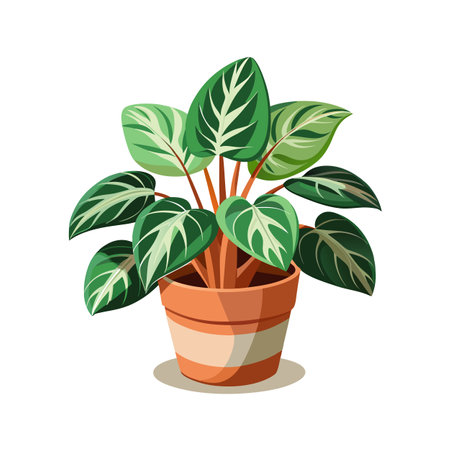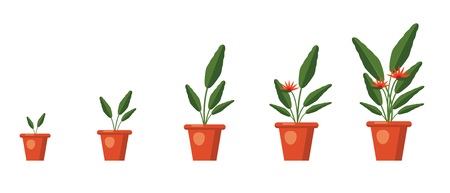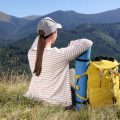The Basics of Foraging Safety
If you’re new to foraging, knowing the essentials is your first step toward a safe and rewarding experience in America’s wild spaces. Before you hit the trail or local woods, preparation is key. Start by researching common edible plants in your region and familiarize yourself with lookalikes that could be toxic or even deadly. Never eat anything unless you’re 100% sure of its identification. Bring along a reliable field guidebook—preferably one tailored to your local area—and consider using reputable plant identification apps as backup.
Proper gear is just as important as knowledge. Always pack gloves, a small knife or shears, sturdy boots, and containers or mesh bags for your finds. Don’t forget water, a first aid kit, and a fully charged phone with GPS capability. Dress appropriately for the season and terrain to avoid exposure or injury.
Respecting local laws and regulations is non-negotiable. Some state parks, national forests, and private lands have strict rules about what you can harvest—or whether you can forage at all. Always obtain permission if needed, follow posted signs, and stay aware of protected species that are illegal to pick. Responsible foraging means leaving no trace: don’t overharvest, and tread lightly to preserve habitats for future explorers. By following these basic rules, you’ll stay safe while enjoying nature’s bounty like a true American outdoorsman.
2. Identifying Edible Wild Plants
Foraging safely starts with solid plant identification skills. Across the US, many edible wild plants share similar features, but some dangerous lookalikes can fool even seasoned outdoorsmen. Knowing what to look for—and which resources to trust—can keep your next backcountry meal safe and satisfying.
Key Characteristics of Edible Wild Plants
Focus on these markers when scouting for edible plants in North America:
| Plant Feature | What to Look For | Common Examples |
|---|---|---|
| Leaf Shape & Arrangement | Smooth, non-hairy leaves; alternate or opposite patterns; avoid shiny or milky-sapped leaves | Dandelion, Lambs quarters |
| Flower Color & Structure | Simple flowers (often yellow, white, or purple); symmetrical petals; avoid umbrella-shaped clusters unless certain | Violets, Wild onions |
| Berries & Fruits | Berries that grow singly (not in clusters) and have dull colors are often safer; avoid white or yellow berries | Blueberries, Black raspberries |
| Smell & Taste (with caution) | Pleasant herbal or onion/garlic scent is a good sign; never taste unless 100% sure of identity | Wild garlic, Wood sorrel |
| Growth Habitat | Open fields, edges of woods, and moist meadows are common areas for edibles; be wary of roadside or contaminated areas | Purslane, Plantain |
Reliable Resources for Accurate Identification
- Field Guides: Invest in region-specific guides such as “Peterson Field Guide to Edible Wild Plants” or “Wild Edibles: A Practical Guide to Foraging.” These offer color photos and detailed descriptions.
- Mobile Apps: Apps like iNaturalist and PlantSnap can help cross-reference your finds, but don’t rely solely on them in critical situations.
- Local Experts: Join foraging classes or hikes led by experienced naturalists—many communities and state parks offer these sessions.
- Extension Services: Many U.S. universities have cooperative extension offices with free plant ID resources tailored to your region.
Cautionary Tips When Identifying Wild Edibles
- If in doubt, leave it out—never eat a plant you can’t positively identify.
- Avoid plants growing in polluted areas (roadsides, industrial sites).
- Double-check against multiple sources before consuming anything new.
- Keep a small notebook or digital log of successful identifications for future reference.
By mastering plant characteristics and using trusted resources, you’ll make confident choices on your wild food adventures. Remember: In survival situations, accuracy can mean the difference between a nutritious find and a nasty mistake.

3. Dangerous Lookalikes: What to Avoid
When you’re out in the wild, one of the biggest risks in foraging is confusing edible plants with their toxic lookalikes. Some poisonous species mimic safe ones so closely that even experienced foragers can get fooled. Let’s break down some common plant imposters in North America and how to tell them apart from their edible counterparts.
Deadly Doppelgängers
Wild Carrot (Queen Anne’s Lace) vs. Poison Hemlock: Both have lacy white flowers and feathery leaves, but poison hemlock is deadly—even a small amount can kill you. Key differences? Poison hemlock has smooth, purple-spotted stems and a foul odor, while wild carrot smells like carrots and has hairy stems without spots.
Edible Berries vs. Toxic Berries: Many edible berries, like blueberries and blackberries, grow near dangerous lookalikes such as nightshade or pokeweed. Nightshade berries are shiny, often grow in clusters, and turn black when ripe, but they are highly toxic. Always check leaf shape and growth pattern—nightshade leaves are pointed and droopy, while true blueberry bushes have smooth-edged leaves.
The Mushroom Minefield
Mushrooms deserve a special shoutout since there are hundreds of toxic varieties mimicking edible ones. For example, the deadly Amanita species (“death cap” and “destroying angel”) look similar to some edible field mushrooms but can be fatal if ingested. If you’re not 100% sure about a mushroom, skip it—no meal is worth your life.
Real-World Example
In 2019, several hikers in California mistook poison hemlock for wild carrot and ended up hospitalized after making tea from its leaves. This is a stark reminder: always double-check your finds with multiple field guides or apps before consuming anything.
Pro Tips for Staying Safe
- If you’re unsure about a plant, leave it alone.
- Carry a reliable field guide specific to your region or use reputable plant ID apps.
- Learn the unique features of both the edible plant and its most common lookalikes before your trip.
The bottom line? When it comes to foraging, respect nature’s camouflage—take time to identify before you taste. A cautious approach could save your life out there!
4. Testing for Edibility in the Field
When you’re out in the wild and unsure whether a plant is safe to eat, it’s crucial to follow proven, field-tested steps to avoid accidental poisoning. The US Army Survival Manual offers a systematic approach for testing unknown plants. Remember, this process is only for emergencies when you have no other food sources and should never replace proper identification skills. Here’s how to test for edibility step by step:
Step-by-Step Plant Edibility Test
| Step | Action | Details & Precautions |
|---|---|---|
| 1. Separate Plant Parts | Isolate leaves, stems, roots, flowers, fruits, and seeds. | Some parts may be toxic while others are edible. Test each separately. |
| 2. Inspect & Smell | Check for strong or unpleasant odors. | If it smells like almonds (cyanide) or has a bitter scent, avoid it. |
| 3. Skin Contact Test | Rub a small piece on your inner elbow or wrist for 15 minutes. | If irritation occurs within 8 hours, do not eat. |
| 4. Lip/Mouth Touch Test | Place a tiny portion on your lips for 3 minutes. | Tingling, burning, or numbness? Spit it out and rinse your mouth. |
| 5. Chew & Hold (Don’t Swallow) | Chew a small amount and hold in your mouth for 15 minutes. | No reaction? Move to the next step. Any negative symptoms? Spit out and rinse immediately. |
| 6. Swallow Small Amount | If no reactions occur, swallow a tiny bite and wait 8 hours. | If you feel sick or notice any symptoms (nausea, cramps), induce vomiting if possible and drink water—do not eat more! |
| 7. Eat Larger Portion | If after 8 hours you’re symptom-free, try eating a larger portion. | Wait another 8 hours before consuming more. |
Cautionary Notes
- Avoid testing plants with milky sap, beans/seeds inside pods, bitter or soapy taste, spines or fine hairs, or those growing in contaminated areas.
- This method cannot guarantee safety—some toxins have delayed effects.
Pro Tip from the Field:
If youre ever unsure about a plant—even after testing—skip it. Hunger is better than poisoning when you’re surviving outdoors. Always prioritize well-known edible species over unknowns whenever possible.
5. Harvesting and Processing Your Finds
Harvest Responsibly: Leave No Trace
When you’re out foraging in the American wilds, ethical harvesting is key. Always follow the “leave no trace” principle: take only what you need, and never pick more than a third of any plant population you find. This ensures that wild edibles can regenerate, keeping nature’s pantry stocked for future foragers—and local wildlife that depend on these resources.
Use the Right Tools
Bring along a sturdy field knife or pruning shears to cleanly cut stems and minimize damage to plants. A breathable bag or basket is ideal for carrying your finds, as plastic can cause greens to wilt fast. Remember, safety comes first: gloves protect against thorny plants and unexpected irritants like poison ivy.
Cleaning Your Wild Harvest
Back at basecamp (or home), lay out your haul and double-check plant IDs before processing—mistakes can be costly. Rinse all plants thoroughly under cold running water to remove dirt, bugs, and potential contaminants. For leafy greens, soak in salted water for 10-15 minutes to draw out any hidden insects.
Preparation Techniques: Getting Edibles Table-Ready
Many wild foods need proper preparation to be safe. Some require boiling to neutralize toxins (like pokeweed shoots or fiddleheads), while others can be eaten raw after a good wash (think dandelion leaves or chickweed). Always consult a reputable foraging guide or local expert if you’re unsure—when it comes to wild food, “better safe than sorry” isn’t just a saying; it’s survival wisdom.
Sustainable Foraging Mindset
Respect property boundaries and always obtain permission before foraging on private land. Stick to public lands where foraging is allowed, and follow posted regulations. By harvesting mindfully and preparing your finds safely, you’ll enjoy the bounty of America’s wild spaces while helping ensure they thrive for generations of outdoor adventurers.
6. Ethical Foraging: Leave No Trace
If you’re foraging in the wilds of America, respecting nature is just as crucial as knowing your edible plants. Ethical foraging isn’t just about what you take home—it’s about preserving the land so future generations can enjoy it too. Following the Leave No Trace principles is a must for any responsible forager.
Respect Nature’s Limits
Always forage with restraint. Take only what you need and never harvest more than one-third of any plant population. This ensures that wild patches can regenerate and continue to support local ecosystems. Avoid picking rare, threatened, or endangered species—even if they’re technically edible.
Leave No Trace Principles in Foraging
- Plan Ahead: Know local regulations and get permission before foraging on public or private lands.
- Stick to Trails: Tread lightly to prevent soil erosion and damage to delicate habitats.
- Minimize Impact: Use a knife or scissors instead of ripping plants out by hand. Don’t disturb roots unless absolutely necessary.
- Pack Out Trash: Leave every site cleaner than you found it—bring a bag for any litter you find along the way.
Protecting America’s Wild Spaces
America’s landscapes are diverse—from Appalachian forests to desert scrublands—each with unique ecosystems. By foraging respectfully, you’re helping safeguard these habitats from overharvesting and human impact. Share your knowledge with others, encourage sustainable practices, and always give thanks to the land that provides. Responsible foraging means ensuring these wild foods—and the freedom to gather them—remain part of our outdoor heritage for years to come.


